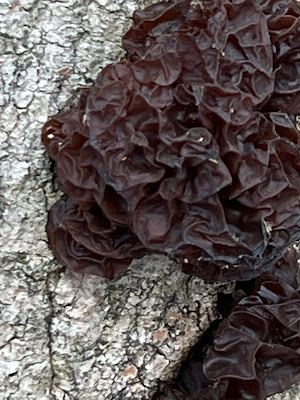The Amber Jellies
You can eat the amber jelly fungus, but before you do, feel free to admire its wrinkly texture and lively spirit. I watched a video of a homesteader sautéing amber jellies for 15 minutes with some spices, which are essential due to the amber jelly's bland rubbery taste.
Amber jellies are common, but they're unique in that they're one of the few mushrooms that pop up in winter. A cross between crumpled paper and a tiny coral reef on a stick, amber jelly fungus spotted in your yard indicates a cause for concern. Amber jellies feed on decomposing trees, so I'm sorry to break this to you, but your tree might be dying.
In my research on amber jellies, conducted over the past two days, I've read about homesteaders who forage for fauna and teach others how to cook the amber jelly fungus for use as a decorative topping for venison meatballs. Why can't these people just go to the grocery store? Why should the amber jellies, who struggle to survive in winter climes, be reduced to tasteless garnish for those with misguided braggadocio?
Next up: Wood Ear Mushrooms.




Comments